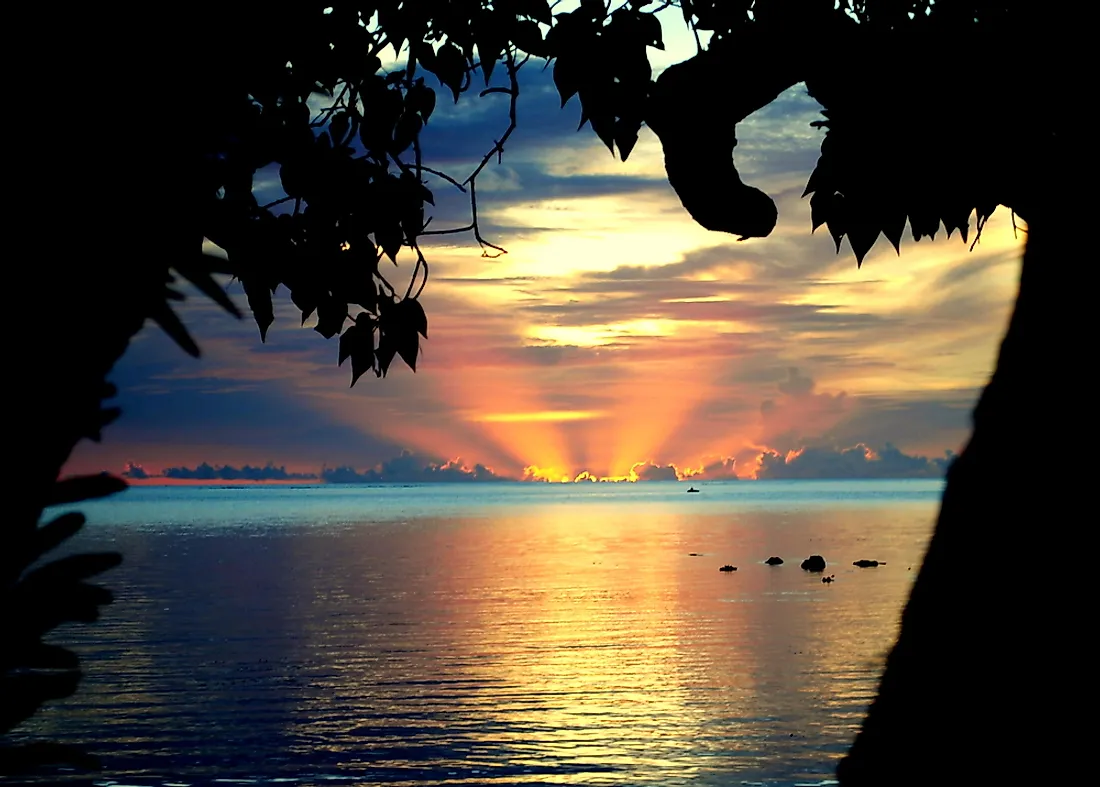What Is the Capital of the Northern Mariana Islands?

The Northern Mariana Islands is an insular area and commonwealth of the United States consisting of 15 islands. Officially the Commonwealth of the Northern Mariana Islands (CNMI), the insular area is situated in the Pacific Ocean and encompasses all islands of the Mariana Archipelago, except Guam, which is also a US territory. The Northern Mariana Islands, along with Guam, are the westernmost points of the US. The CNMI covers an area of approximately 183.5 square miles and had a population of 53,800 in 2010. The majority of the CNMI's population live on three islands, Saipan, Rota, and Tinian, while the remaining islands are sparsely populated. Saipan, which is the most populated island, is the capital of the Northern Mariana Islands.
Saipan
Saipan is the largest and the most populous island of the CNMI, with a population of approximately 52,000 people. Additionally, it is the second largest island by area in the Mariana Archipelago, after Guam. It is situated approximately 120 miles north of Guam and separated from Tinian by the Saipan Channel. The island covers an area of about 44.5 square miles, is 12 miles long, and 6 miles wide. The western part of Saipan is characterized by sandy beaches, while the eastern side is composed of reefs and rocky cliffs. Mount Tapochau is the highest point on the island, at an elevation of 1,560 ft. The government of the Northern Mariana Islands is located on Saipan, in the village of Capitol Hill.
Brief History of Saipan
Human settlements on Saipan can be traced as far back as 4,000 years. However, the island's more recent history is perhaps linked to one of two Spanish expeditions in the sixteenth century. Some historical accounts suggest Ferdinand Magellan reached the archipelago in March 1521, while others claim Gonzalo Gómez de Espinosa spotted the islands in 1522 after Magellan's death. However, the first clearly documented arrival of European colonialists in Saipan is linked to Spanish trader Juan Martinez, who shipwrecked on the island in 1600. The island was formally occupied by Spain in 1668, leading to a dramatic decline in the indigenous population. Following the Spanish-American War in 1898, the US occupied the island, but it was later sold by Spain to the German Empire in 1899. During World War I, the Empire of Japan captured the island and was awarded its control by the League of Nations in 1918. The US gained control of Saipan from Japan in 1944 following the Battle of Saipan. The island has been a municipality of the Northern Mariana Islands since 1978.
Economy
Tourism has historically been the main source of revenue in Saipan. However, during the 1980s, garment making became a key economic sector when the US exempted CNMI from certain federal minimum wage and immigration laws. Brands that operated garment factories in Saipan have included The Gap, Tommy Hilfiger, L’Oreal, and Walmart. However, most of these factories were closed following the expiry of the General Agreement on Tariffs and Trade (GATT) in 2005, which eliminated quotas on textile export to the US. Today, Imperial Pacific International Holdings is the largest taxpayer in Saipan, having invested heavily in casinos, restaurants, and hotels. The casino industry in Saipan is currently handling over $2 billion in bets monthly, which is a major boost to the island’s economy.











